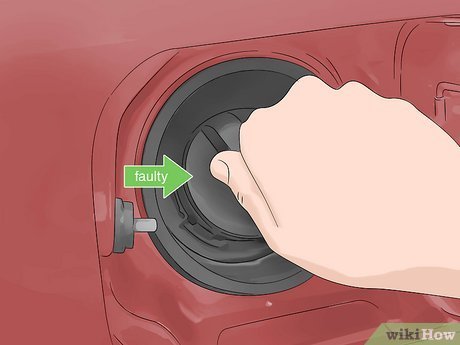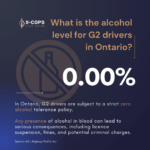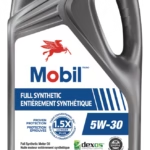
Why Does My Car Smell Like Gasoline? Guide for Canadian Drivers

A strong smell of gasoline coming from your vehicle can be concerning—and for good reason. Whether you’re parked in your driveway in Toronto, stuck in traffic in Vancouver, or driving through a cold Alberta morning, a gas smell is not something to ignore. It may be harmless in some cases, but it could also indicate a serious safety or mechanical issue.
Limited Time Automotive Amazon DealsThis in-depth guide explores the most common causes of a gasoline smell in your car, how Canadian climate and conditions may influence those causes, and what you should do to resolve them safely.
1. Is the Smell Inside or Outside the Vehicle?
The first step in diagnosing a gas smell is determining where it’s coming from:
- Inside the cabin: Suggests a leak in the fuel system near the engine or HVAC.
- Outside or under the car: Could indicate a leak from the fuel tank, fuel lines, or exhaust.
Also, check if the smell occurs only when the car is running, just after refueling, or constantly. This will help narrow down the source.
2. Common Reasons Your Car Smells Like Gasoline in Canada
A. Loose or Damaged Gas Cap
Most common and easily fixable cause.
- If your gas cap is not tightened properly or the rubber seal is cracked, fuel vapours can escape.
- In winter, ice or snow buildup around the gas cap can prevent it from sealing properly.
Fix:
- Remove and re-tighten the gas cap until you hear clicks.
- If damaged, a replacement cap costs $15–$40 CAD.
B. Fuel Leak in the Engine Bay
A leaking fuel injector, cracked fuel line, or damaged fuel rail can cause gas smells—especially under the hood.
- In cold Canadian winters, rubber seals and hoses can become brittle and crack, leading to small but dangerous leaks.
- Check for visible signs of wetness, pooling fuel, or hissing sounds when the engine is running.
Fix:
- Requires professional repair.
- Fuel line repair may cost $150–$500 CAD depending on severity.
C. Leaky Fuel Tank or Fuel Lines
This is more common in older vehicles or those exposed to road salt during Canadian winters.
- Salt accelerates corrosion, especially around the undercarriage and fuel tank.
- A leak in the metal fuel tank or steel lines can cause gas to drip onto the ground.
Fix:
- Fuel tank repair/replacement costs $400–$1,200 CAD.
- Steel line replacement may run $300–$800 CAD.
D. Overfilled Gas Tank or Recent Refueling
Spilling gas when filling up is common, especially in self-serve stations during freezing temperatures where gloves or cold hands might reduce grip.
- Overflow or splashing can result in temporary gasoline odours around the car.
- Some stations in Canada still use older nozzle systems with less splash prevention.
Fix:
- Odour should dissipate in a day or two.
- If it persists, it may be a larger issue with the evaporative emissions system (EVAP).
E. EVAP System Leak or Fault
Modern vehicles use an Evaporative Emissions Control System (EVAP) to trap fuel vapours and prevent them from escaping.
Common failures include:
- Cracked charcoal canister
- Leaky vent hoses
- Faulty purge valve
Canadian winters can cause plastic components to become brittle and crack, leading to slow leaks.
Fix:
- Diagnosing EVAP leaks often requires a smoke test.
- Typical repair costs range from $200–$700 CAD.
F. Faulty O-Rings or Gaskets on Injectors
If you smell fuel inside the cabin and have rough idling or starting problems, the injector O-rings could be leaking.
- High ethanol-content fuel sold in some provinces can harden rubber seals faster.
- In older cars, gaskets may crack due to thermal cycling (heat and cold).
Fix:
- O-ring or gasket replacement costs $100–$300 CAD.
G. Exhaust System Leak
Sometimes, a fuel-like smell comes from an exhaust leak, especially near the catalytic converter or exhaust manifold.
- If unburned fuel exits the exhaust, it smells like raw gasoline.
- Cold-start in Canada often produces more unburned hydrocarbons due to richer fuel mixtures.
Fix:
- Exhaust repair costs range from $200–$1,000 CAD, depending on whether it’s a gasket, pipe, or converter issue.
3. Why It’s More Common in Canada
Several factors make fuel smells more frequent or severe in Canada:
| Factor | Impact |
|---|---|
| Cold Winters | Rubber and plastic fuel system parts become brittle and prone to cracking. |
| Road Salt | Corrodes fuel tanks and metal lines. |
| Remote Starters | More idling = more unburned fuel during cold starts, potentially creating stronger odours. |
| Ethanol Fuel Blends | More corrosive on rubber seals, especially in older vehicles. |
4. Is It Dangerous?
Yes. A gas smell can indicate a fire hazard, especially if there’s a fuel leak near the engine or exhaust.
Signs to Take Seriously:
- Visible fuel leaks
- Engine misfires
- Decrease in fuel economy
- Strong gas smell even when car is off
Act immediately. Park in a well-ventilated area away from open flames or sparks and avoid driving the vehicle until it’s checked by a mechanic.
5. What Should You Do?
a) Short-Term
- Tighten or replace the gas cap.
- Check under the vehicle for leaks or drips.
- Ventilate your vehicle if the smell is inside the cabin.
b) Visit a Mechanic If:
- The smell persists for more than 24 hours.
- You see warning lights (Check Engine, EVAP, etc.).
- Fuel economy drops or engine runs rough.
Canadian Tire, Midas, OK Tire, and dealership service centres across Canada can perform smoke tests and fuel system diagnostics.
6. Prevention Tips for Canadian Drivers
- Avoid overfilling the tank.
- Regularly inspect the undercarriage for rust and leaks.
- Use winter-specific fuel additives to prevent fuel line freezing.
- Schedule annual fuel system inspections before winter.
Conclusion
If your car smells like gasoline in Canada, it could be as simple as a loose gas cap—or as serious as a corroded fuel tank. The colder climate, salted roads, and longer idling periods during Canadian winters can all contribute to fuel system wear.
Don’t ignore it. Even if you’re not experiencing drivability issues, a gasoline smell can signal a fire risk or environmental hazard. Have your vehicle inspected by a trusted Canadian mechanic, especially before long road trips or harsh winter conditions.
Add a comment Cancel reply
Categories
- Auto Detailing (1)
- Car News (2)
- Car Reviews (1)
- How To (1)
- Uncategorized (156)
Recent Posts
About us

Related posts


Ontario G2 License Restrictions 2026

Cost of a Hellcat in Canada: Charger, Challenger & Engine Prices Explained








